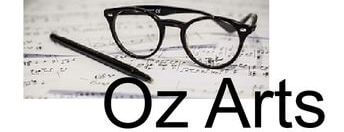Shura Cherkassky, Fritz Lehmann, Rita Streich, Andres Segovia, Koeckert Quartet, Irmgard Seefried, David & Igor Oistrakh, Eugen Jochum, Ferenc Fricsay, Vegh Quartet, Nicanor Zabaleta, Leopold Simoneau, Helmut Zacharias, Andor Foldes, Kim Borg
DG 474 576-2
TPT: 2:36:45
reviewed by Neville Cohn
For any record collector over sixty years of age, the 1950s are sure to be remembered as the decade which saw, for the first time, 45 rpm discs which were know as EPs – extended play records. The 7-inch discs seldom ran for more than ten or twelve minutes but for those on limited budgets, in particular, it was a cheaper way to get a record collection started than by purchasing the significantly more expensive LPs.
In this milieu, Deutsche Grammophon was the big player, turning out quality recordings by some of the most prominent musicians of the day. Most of these little records, if they exist at all nowadays, are gathering dust in some lounge room corner or in cardboard boxes in backyard store rooms.
Resurrecting some of the best and placing them on CD will rekindle memories of the fifties for many and are certain to attract younger listeners who weren’t even born when 45rpms took the music world by storm.
Much of the material here recorded is of the encore variety, musical bon bons that this or that musician or ensemble might have offered at the end of a concert in response to prolonged applause.
Listen to Shura Cherkassky, then (1955) at the height of his powers, in Morton Gould’s Boogie Woogie Etude, given high-octane boogie treatment – or the Koeckert Quartet offering Hugo Wolf’s Italian Serenade. The latter is one of DG’s less well-recorded offerings. The playing is beyond criticism in the conventional sense but the microphones sound far too close and the sound is unhappily dry and grainy. But there are compensations aplenty, not least from Finnish bass Kim Borg who is in magnificent in two settings – one by Beethoven, the other by Mussorgsky – of Goethe’s famous Song of the Flea. For once, the usually impeccable DG sound engineers got it wrong in that Erik Werba’s piano accompaniment is far too faint in the Mussorgsky setting, barely audible at times. But the sound balance in Beethoven’s setting is perfect.
Celebrated Spanish harpist Nicanor Zabaleta is frankly wonderful in Salzedo’s Chanson dans la nuit, not least for finest filigree ripples of sound. Father and son team David and Igor Oistrakh provide rather meatier fare in a trio sonata in F by Tartini. Also more musically substantial is the Vegh Quartet’s account of what had originally been thought a work of Haydn – Quartet in F “Serenade” – but is now believed to be by Roman Hoffstetter. Whoever wrote it is a secondary consideration; the music is a delight and the playing borders on the sublime. It’s a high point of the compilation; so, too, is the artistry of Andor Foldes, the now-almost-forgotten Hungarian pianist who does wonders with Stravinsky’s galumphing Circus Polka (written as accompaniment to dancing by an elephant troupe from the Barnum and Bailey Circus). And his account of Albeniz’s Tango in D makes this most hackneyed of piano pieces sound newly minted.
The liner note booklet includes colour reproductions of the original sleeve covers.
This is a fascinating compilation which, hopefully, will be followed by more in similar vein.
Copyright Neville Cohn 2004



